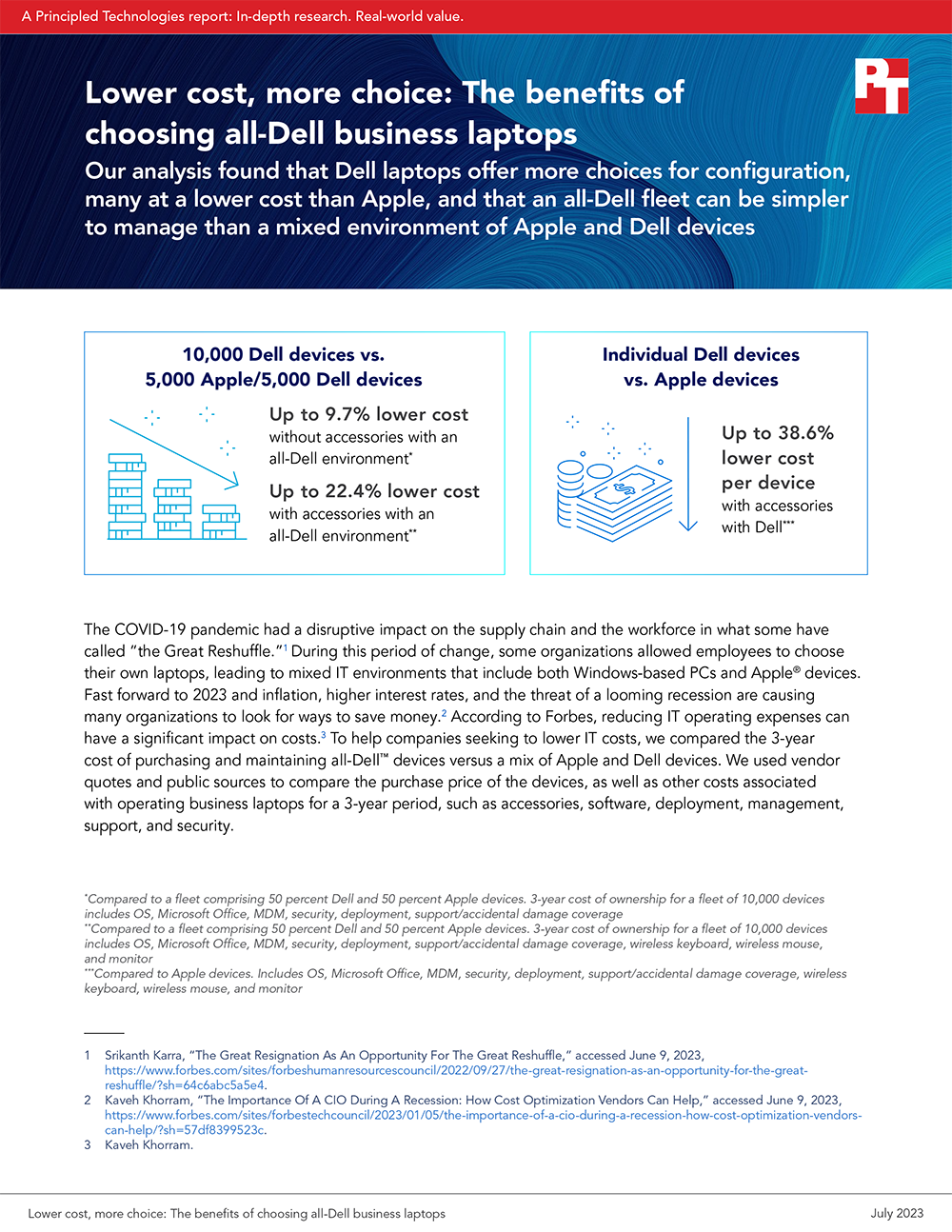
The COVID-19 pandemic forced many organizations to permanently change the way they approach the concepts of remote work and distributed IT infrastructure. Businesses had to adapt on the fly—amid supply chain disruptions and device shortages—and mixed, sometimes even ad-hoc IT environments became more common. For many, remote work is here to stay, but in today’s challenging economic conditions, controlling IT operating expenses is a must. Now is a good time to assess the true long-term costs associated with mixed IT environments and find ways to save money without sacrificing capability.
To see how real-world costs add up in different IT environments, we compared the cost of two hypothetical enterprise deployments of 10,000 devices: one with 10,000 all-Dell devices and one with a mix of 5,000 Dell and 5,000 Apple devices. For both environments, we modeled a comparable range of laptop types and used vendor quotes and public sources to compare the 3-year cost of purchasing and maintaining the devices. We also included additional costs, such as accessories, software, deployment, management, support, and security, that businesses will incur while operating business laptops for a 3-year period.
Our analysis found that the cost of purchasing and maintaining an all-Dell environment was up to 9.7 percent lower without accessories than the cost of a hybrid Dell/Apple environment. When we added accessories such as monitors, keyboards, and mice, an all-Dell environment was up to 22.4 percent less expensive than the hybrid environment. We also found that Dell laptops offer more configuration choices than Apple, and that an all-Dell laptop fleet can be simpler to manage than a mixed environment of Apple and Dell devices. For organizations of all sizes, these types of savings in upfront and ongoing costs can make a big positive impact on the bottom line.
To read more about our model IT environments and the devices we included for comparison, check out the report below.
Principled Technologies is more than a name: Those two words power all we do. Our principles are our north star, determining the way we work with you, treat our staff, and run our business. And in every area, technologies drive our business, inspire us to innovate, and remind us that new approaches are always possible.






